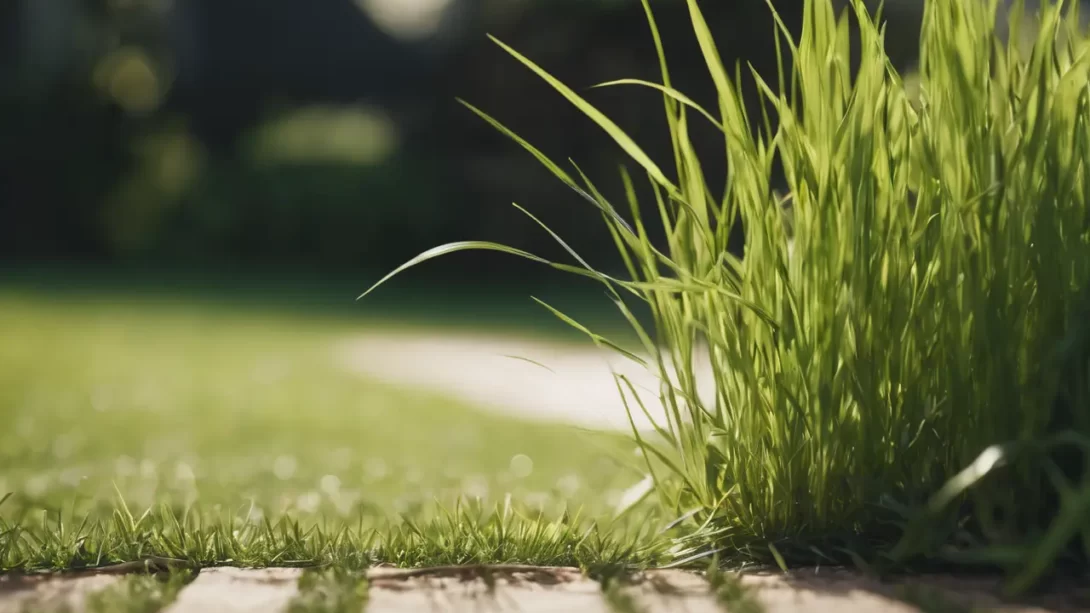St. Augustine grass, known for its lush, carpet-like quality, is a popular choice for lawns in warmer climates. This grass type is favored for its ability to establish quickly and create a dense, attractive turf. However, encouraging it to spread rapidly and healthily requires specific care and techniques. This article will delve into effective strategies to help your St. Augustine grass flourish and cover your lawn evenly and quickly.
- Lesco Professional, 50 LB, 13,00 SQFT, 17-0-17 St Augustine Turf Fertilizer
- 30% Poly Coated Sulfur Coated Urea, Specially For St. Augustine Grass
- Should Be Applied When Turf Is Wet, Allow To Dry & Total Results In 2 Weeks, Safe For Floratam Variety, Slow Release Providing Up To 8 Weeks Of Feeding
- Its very easy and elegant to use
St. Augustine Grass
St. Augustine grass (Stenotaphrum secundatum) is a warm-season turfgrass known for its thick, broad, and flat blades. It thrives in coastal regions with warm, humid conditions but can also adapt to various soil types. This grass is valued for its shade tolerance compared to other warm-season grasses, making it suitable for lawns with mixed sun and shade. Understanding its growth patterns and requirements is key to promoting a quicker spread and establishing a robust and vibrant lawn.
Optimal Growing Conditions
To ensure rapid spreading of St. Augustine grass, providing optimal growing conditions is crucial. This grass variety thrives in warm temperatures, ideally between 80-100°F (27-38°C). It requires at least 4-6 hours of sunlight daily to maintain its health and vigor. Soil condition is equally important; St. Augustine prefers a pH range of 5.0 to 8.5 and benefits from well-draining, fertile soil. Ensuring these conditions are met will create an environment conducive to quick growth and spread.
Proper Lawn Preparation
Preparing the lawn is a fundamental step in facilitating the rapid spread of St. Augustine grass. Start with a thorough soil test to determine the soil’s pH and nutrient levels. Based on the results, you may need to amend the soil to optimize its condition. Adding organic matter like compost can improve soil structure, especially in clay or sandy soils. Ensure the planting area is clear of debris, rocks, and weeds, and the soil is loosened to a depth of at least 4-6 inches to allow for root expansion. Proper preparation sets the stage for St. Augustine grass to establish quickly and start spreading.
Planting Techniques
When establishing a new lawn or enhancing an existing one, the planting technique is pivotal for St. Augustine grass’s spread. For new lawns, St. Augustine grass is typically installed via sod, plugs, or sprigs. Sodding provides an instant lawn, but it’s the most expensive option. Plugging is more cost-effective and involves planting small sections of sod at intervals; these plugs then grow and fill in the gaps. Sprigging involves planting stolons or runners of grass. Both plugging and sprigging require patience as they take time to establish and spread.
In existing lawns, overseeding isn’t usually effective for St. Augustine grass due to its growth habit. Instead, filling bare patches with plugs or sprigs can encourage uniform spreading. Ensure that these are planted firmly and have good soil contact.
Watering and Fertilization
Watering and fertilization are critical in promoting the quick spread of St. Augustine grass. After planting, water the grass daily for the first 7-10 days to keep the soil consistently moist but not waterlogged. Once established, reduce watering to about 1 inch per week, depending on the climate and soil type. Over-watering can lead to fungal diseases, while under-watering can stress the grass.
Fertilization is essential for nutrient supply. Use a fertilizer specifically formulated for St. Augustine grass, and follow the recommended rates and schedule. Typically, fertilizing should be done in the spring, early summer, and early fall. Avoid over-fertilizing, as it can lead to rapid but weak growth, making the grass more susceptible to pests and diseases.
Mowing and Maintenance
Proper mowing practices can significantly influence the spreading speed of St. Augustine grass. Mow the grass at a height of about 2.5 to 3 inches, and never remove more than one-third of the leaf blade in a single mowing. Keeping the grass at an optimal height encourages lateral growth and thicker turf.
Regular lawn maintenance, including dethatching and aeration, is beneficial. Dethatching removes the layer of dead grass and debris that can inhibit growth, while aeration relieves soil compaction, allowing roots to expand more easily. These practices help in creating a healthier environment for St. Augustine grass to spread and thrive.
Dealing with Pests and Diseases
St. Augustine grass, while robust, is susceptible to certain pests and diseases that can hinder its growth and spread. Common pests include chinch bugs, grubs, and sod webworms. Diseases such as brown patch, gray leaf spot, and take-all root rot can also be problematic. Regular monitoring and early detection are key to managing these issues. Use appropriate pest control methods and fungicides, following label instructions carefully. Maintaining healthy grass through proper watering, mowing, and fertilization significantly reduces the likelihood of pest and disease problems.
Enhancing Spreading Through Proper Care
In addition to basic care, there are additional practices to encourage faster spreading of St. Augustine grass:
- Top Dressing: Apply a thin layer of compost or topsoil in the spring or fall. This can improve soil quality and grass vigor.
- Reducing Foot Traffic: Minimize walking on new or recovering areas to prevent compaction and damage.
- Seasonal Adjustments: Adapt your lawn care routine to seasonal changes. For instance, reduce watering in cooler months and adjust mowing height as needed.
Remember, St. Augustine grass spreads by stolons (above-ground runners), so keeping your lawn healthy allows these stolons to grow and root more effectively.
Conclusion
Encouraging St. Augustine grass to spread quickly requires a combination of proper lawn preparation, appropriate planting techniques, diligent care, and regular maintenance. By creating optimal growing conditions, maintaining a consistent watering and fertilization schedule, and dealing promptly with any pests or diseases, you can foster a lush, rapidly spreading St. Augustine lawn. Patience and consistent care are essential, as even with the best practices, grass takes time to grow and fill in. With dedication, your St. Augustine grass will soon transform into a thick, vibrant carpet covering your lawn.



